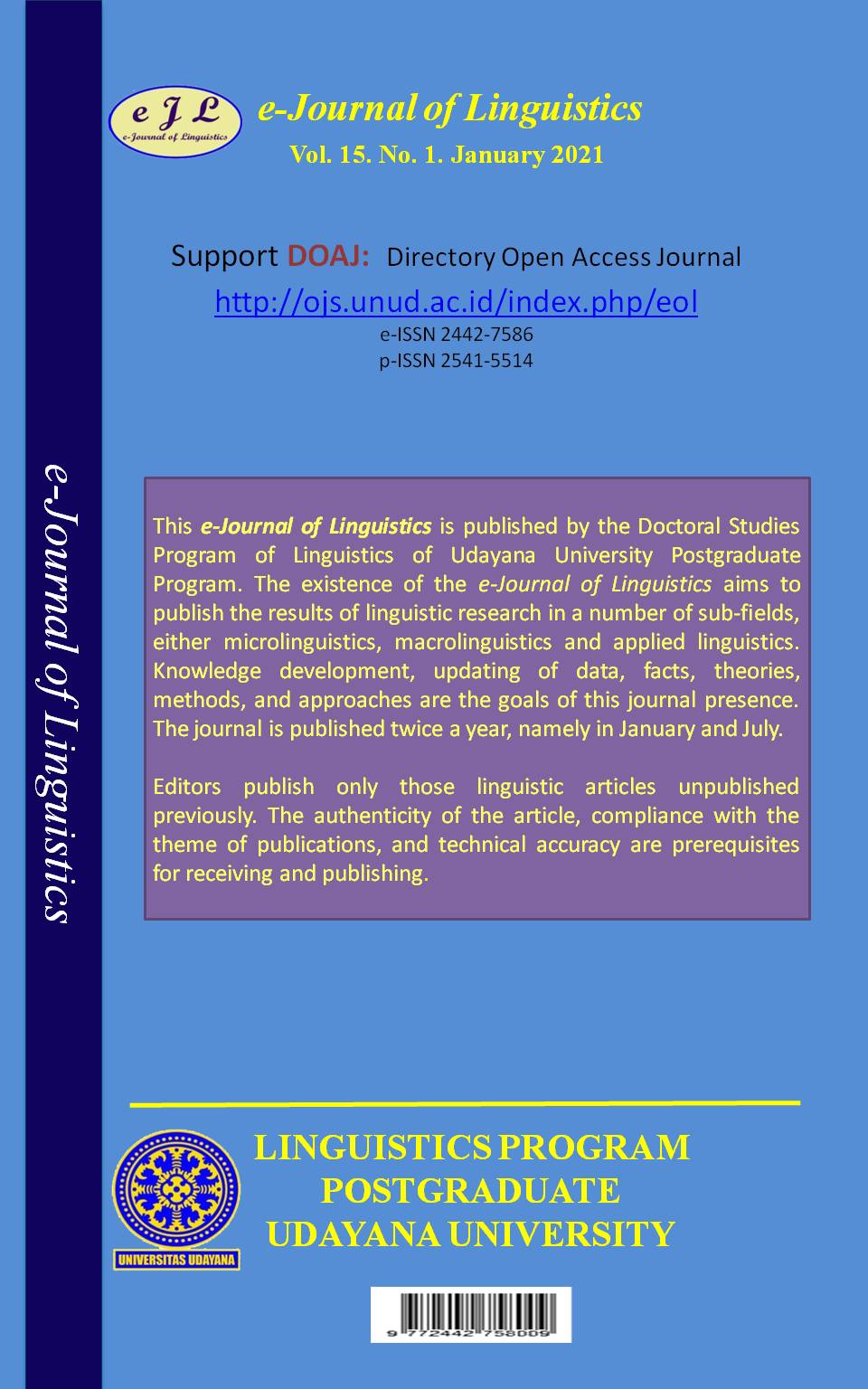Kinds of Meaning in Classical Arabic from More Recent Denotational Theory Perspectives
Abstract
This paper explores the extent to which meaning is conveyed in Classical Arabic. It aims to quantify as well as qualify the various kinds of meaning and the techniques used to advance them on the linguistic various levels. From a semantic perspective, it first categorizes kinds of meaning according to denotation and connotations satisfied by paraphrasing and definition and to 'sense' perceived by ostensive, i.e. sensory, definition. Second, it examines the syntactic meaning achieved by composition, addition, and (inclusively but exceptionally by) Arabic sentence-pattern switching and phoneme clipping on the structural level. Then, it advances lexical meaning expressed by synonyms, antonyms, hyponyms, meronyms, polysemous words, and family resemblances. Finally, it presents the categorematic word that can carry full meaning and the syncategorematic one which can only modify meaning. In both types, morphemes are isolated and allomorphs are exemplified. The paper quotes from the Holy Script of Islam, the Noble Quran, for its linguistic preciseness and conciseness.
Downloads
References
[2] Al-Otaibi, S., & Khan, M. B. (2017). Sentiment analysis challenges of informal Arabic. IJACSA) International Journal of Advanced Computer Science and Applications, 8(2).
[3] Beatty, K. (2003). Teaching and Researching Computer-assisted Language learning (2nd edit.). London: Longman.
[4] Dudley-Evans, T. & ST John, M.J. (1998) Developments in English for Specific Purposes: A multi-disciplinary approach. Cambridge: CUP.
[5] English Dictionary. Available at: www.dictionary.com [Accessed in August 2020].
[6] Gutzmann, D., & Stei, E. (2011). Quotation marks and kinds of meaning. Arguments in favor of a pragmatic account. Understanding quotation, 161, 194.
[7] Hall, D. G., & Waxman, S. R. (1993). Assumptions about word meaning: Individuation and basic‐level kinds. Child Development, 64(5), 1550-1570.
[8] Hasan, A. A., Al-Sammerai, N. S. M., & Kadir, F. A. B. A. (2011). How Colours Are Semantically Construed in the Arabic and English Culture: A Comparative Study. English language teaching, 4(3), 206-213.
[9] Hurford, J. R., Heasley, B. & Smith, M. B. (2007). Semantics (2nd edition). Cambridge: CUP.
[10] Holmes, J (2013). An Introduction to Sociolinguistics (4th ed.). New York: Routledge.
[11] Katamba, F. (2006). Morphology (2nd edit.). Palgrave: Macmillan.
[12] Kearns, K. (2000). Semantics (1st edit.). New York: St. Martin’s Press.
[13] Norbert Schmitt (editor: 2010). An Introduction to Applied Linguistics (2nd edit.). London: Hodder Education.
[14] Palmer, F. R. (1995). Semantics (2nd edit.). Cambridge: CUP.
[15] Webster's English Dictionary: Defining Words for English Language Learners. Available at: http//:www.merriam-webester.com [Accessed in August 2015].

This work is licensed under a Creative Commons Attribution 4.0 International License











